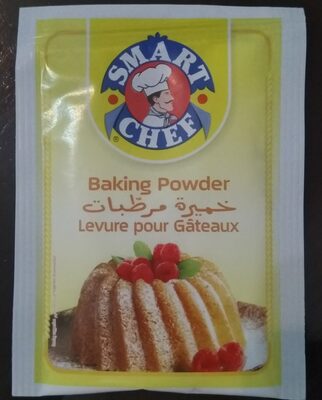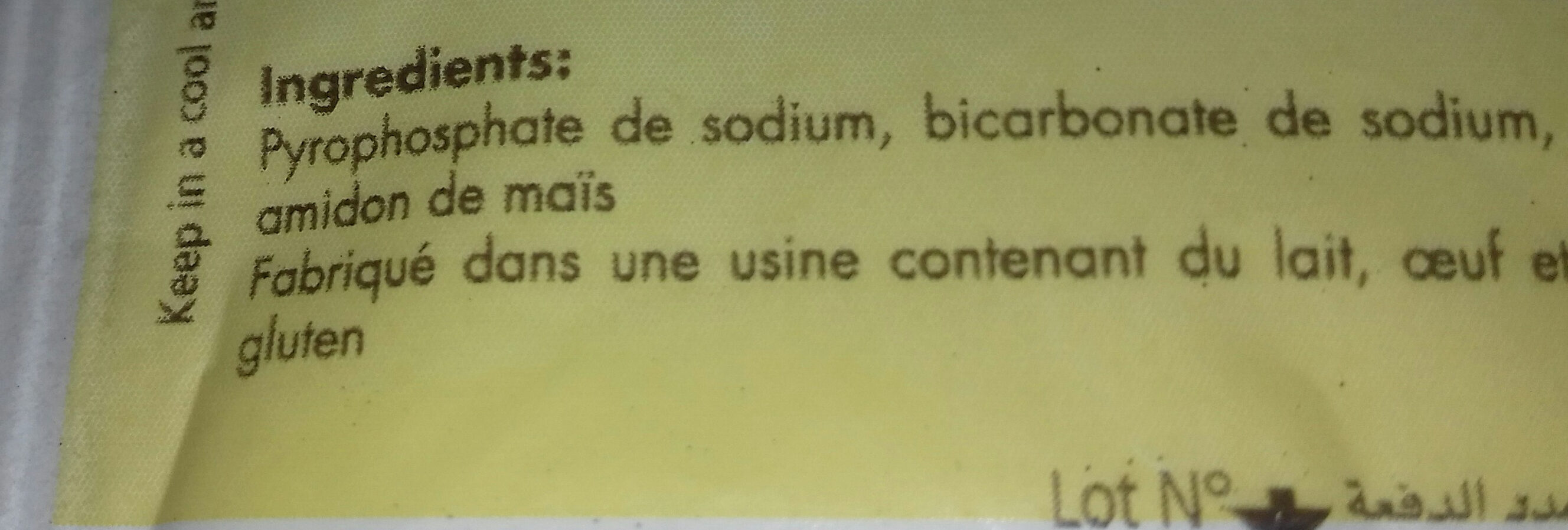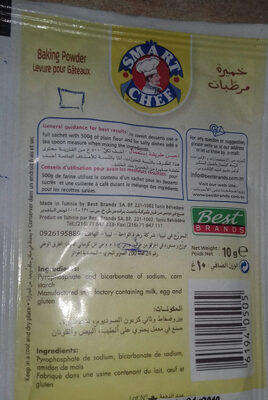Baking powder - Smart Chef - 10 g
Barcode: 61940505
Quantity: 10 g
Packaging: fr:Feuille papier
Brands: Smart Chef, Best Brands
Categories: Condiments, Cooking helpers, Food additives, Pastry helpers, Baking powder or raising agent, Nutritional yeast, fr:Poudres à lever
Labels, certifications, awards:
Green Dot
Origin of the product and/or its ingredients: Made in Tunisia
Origin of ingredients: Tunisia
Manufacturing or processing places: Tunisie
Link to the product page on the official site of the producer: http://www.best-brands.net/fr/product/sm...
Stores: Partout
Countries where sold: Tunisia
Matching with your preferences
Report a problem
Data sources
Product added on by openfoodfacts-contributors
Last edit of product page on by gmlaa.
Product page also edited by ecoscore-impact-estimator, nadamanaa, packbot, roboto-app.










